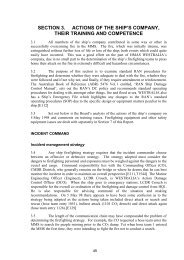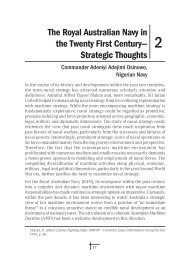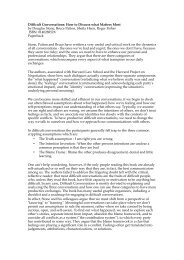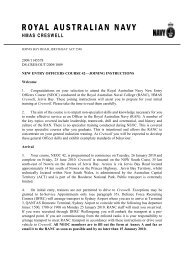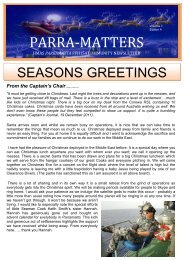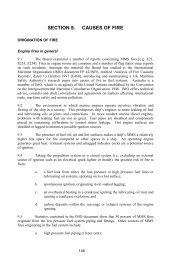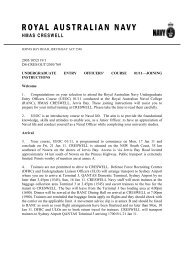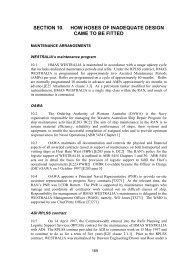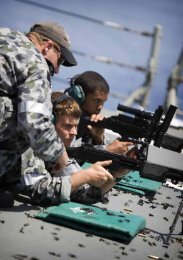UNDERSTANDING MARITIME DOCTRINE - Royal Australian Navy
UNDERSTANDING MARITIME DOCTRINE - Royal Australian Navy
UNDERSTANDING MARITIME DOCTRINE - Royal Australian Navy
You also want an ePaper? Increase the reach of your titles
YUMPU automatically turns print PDFs into web optimized ePapers that Google loves.
• Maritime doctrine contains the principles by which naval<br />
forces guide their actions in support of national objectives.<br />
• Maritime doctrine is derived from hard won national and<br />
international experience gathered over many years.<br />
• Comprehensive maritime doctrine is a key element of the<br />
<strong>Royal</strong> <strong>Australian</strong> <strong>Navy</strong>’s capability.<br />
the PurPose of maritime doctrine<br />
Military doctrine contains the fundamental principles by which military<br />
forces guide their actions in support of national objectives. It helps<br />
planners and commanders approach dangerous, chaotic and unfamiliar<br />
situations with clarity of thought. It is based on rigorous analysis and a<br />
comprehensive understanding of the history of human conflict and national<br />
military experience. In effect, military doctrine provides a basis for action<br />
founded upon knowledge.<br />
Maritime doctrine is that component of military doctrine which sustains the<br />
employment of armed forces at and from the sea. This definition recognises<br />
the inherently joint nature of maritime operations and the fact that these<br />
operations are of use only so far as they can affect the course of a campaign,<br />
whether directly or indirectly. This book, <strong>Australian</strong> Maritime Doctrine: RAN<br />
Doctrine 1, explains the key concepts for the conduct of successful maritime<br />
operations. At a fundamental level it explains why Australia has a navy.<br />
the origins of australian maritime doctrine<br />
One of the principal themes of the <strong>Royal</strong> <strong>Australian</strong> <strong>Navy</strong>’s (RAN) doctrinal<br />
experience is that for most of its history its practices have been largely<br />
international. As the <strong>Navy</strong> of a medium power, and one which had its<br />
roots in the <strong>Royal</strong> <strong>Navy</strong> (RN) and has since frequently operated as part of<br />
alliance forces, the RAN has had no need to develop its doctrine wholly<br />
from first principles. Rather more than air forces and considerably more<br />
than armies, almost all modern navies operate from a very large base of<br />
shared international doctrine, allowing a level of mutual understanding<br />
that also manifests itself at much higher levels of command. For example,<br />
all of Australia’s allies at sea operate with Allied Tactical Publication 1 as<br />
a standard reference when manoeuvring and communicating with each<br />
other. Most friendly navies have access to earlier but still valid versions of<br />
the same document, while those that do not are able to use an expurgated<br />
version which allows any warship to communicate and manoeuvre safely<br />
with another. Replenishment at sea is also a generally shared skill that is the<br />
1<br />
1




